By Shi En Kim
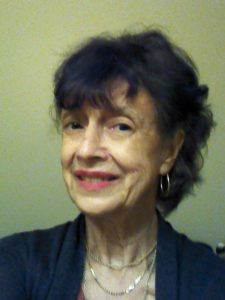
Can a woman pursuing a career in physics ever lead a normal family life?
“No,” was the answer a young Kathryn Levin received from a female physicist mentor-figure. Suddenly, this high schooler with big dreams was brought down to Earth to face her unfortunate reality: sacrifice family to follow her passion for physics or dash her career calling to attain fulfillment at home. It was an impossible choice, so Levin chose the impossible. The smart, headstrong, and resourceful young scientist entered college and leapt towards a future that she would build—a future in defiance of the grim expectations for women in the physical sciences. She was going to have it all.
* * *
I make my way down to Professor Kathryn Levin’s office just as she is wrapping up a discussion with a graduate student on some of their latest research results. She spies me not long later and saunters over with the remnants of excitement on her face. Clearly, it was a fruitful dialogue with her mentee, and she loved every minute of it.
Professor Levin is an award-winning professor of physics at the University of Chicago. She and her research group model atomic superfluids—fluids with zero viscosity when cooled to near absolute zero temperature—and exotic superconductors, solids which can technically carry an electrical current indefinitely with no loss in energy. Her enthusiasm for physics remains robust, even though she has been a professor for over 30 years. Very few women dare venture into a field as esoteric as hers, let alone one with such meager female representation. Even Professor Levin recognizes this. She is one of only three female faculty members in the department’s research subfield of condensed matter physics.
Also, she is happily married with two children. From all appearances, she has reached the highest echelons of physics yet not compromised her dreams to have a cozy family of her own, defying the predictions that her physicist mentor-figure made all those years ago.
As Professor Levin regales her story to me, I am not sure which I find more astonishing: that her own physicist father discouraged her from following in his footsteps as she was growing up, or that she was still headstrong enough to pursue physics despite such overwhelming negative feedback. Nevertheless, she insists she succeeded because of the negative advice as they sharpened her drive. She graduated top of the College of Letters and Science at the University of California Berkeley, then went on to graduate school at the prestigious Harvard University. She humbly claims that her path of becoming a physics professor is one of serendipity. Her secret to success in academia? ‘By exceling in the moment,’ she declares. ‘Life is not plannable. I only really wanted to do well in research, I never had a step-by-step plan.’
As an engineering graduate student at the University of Chicago, I came to know Professor Levin from taking two of her physics classes. One of them was Advanced Condensed Matter Physics. Besides me, the professor was the only other female in the class. Since taking her class, I have exponentially come to admire female scientists—especially the physicists—who stick it out in academia. It takes courage and a mental fortitude to overcome the barriers for entry, to ignore the dearth of women and the blatant male majority, of whom a woman like me can easily slip into fears of being left behind.
But women are usually on par with their male peers, despite the more prevalent lack of confidence in women, Professor Levin points out. Gender has never been either a measure or a proxy for personal and professional success, even in physics. She is truly the embodiment of this philosophy. Her pet peeve is when women are judged at a different standard than men are when it comes to boosting female representation in science at all levels. According to her, women and men can and should compete on a level playing field.
Nevertheless, Professor Levin emphasizes that it is important to have a strong emotional support network to counter such fears of the contrary, especially in graduate school. Even higher up along the academic ladder, she feels that overall, there is a sense in the wider community of tenured female professors of being underappreciated and marginalized—which women, particularly senior women, have to overcome. She pays tribute to her friend the late Professor Debbie Jin from the University of Colorado, who was her own source of encouragement and strength.
Outside of the field of physics, Professor Levin enjoys playing the piano recreationally. She suspects that music and physics go hand-in-hand somehow, as if both interests involve the same part of the brain. Still, her greater love will always be physics. It is palpable in her approach to research, in the people she surrounds herself with (her husband and one of her children are, unsurprisingly, also physicists), and even how she interacts with her group. She is definitely more involved in her research group’s projects than most other researchers I have seen. Her group is free to pop into the office whenever they want; there was one member who dropped by during our interview. The whole process of research to her is an emotional roller coaster, but she wants to stay as an intimate participant of these ups and downs. Physics she regards with a treasure hunt mentality, in a way that she will never be tired or jaded. Even several decades after setting foot into academia, she still shows no signs of stopping—or slowing down either.
Towards the end of her interview, Professor Levin reminds me that she has to attend a farewell party of a group member and needs to leave soon. Before heading to the event, she enthusiastically hurries to her graduate student’s office for another brief discussion on her research. I watch in admiration as Levin responds to the beckoning of the treasure trove of physics, to ‘excel in the moment’ once again.
Somehow, I know that she would have made her high school physicist mentor-figure and her father proud.

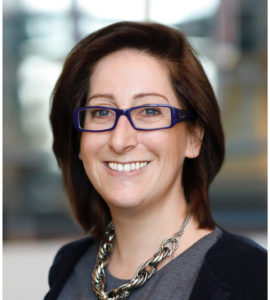
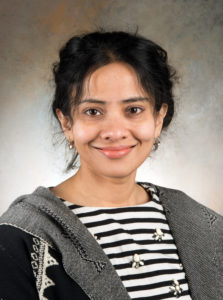
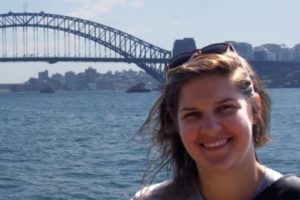 A great role model
A great role model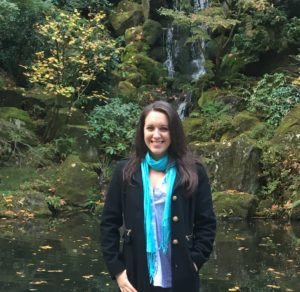 Dr. Rebecca (Becky) Toroney took to biochemistry during her undergraduate years at Franklin & Marshall College. While working under Prof. Ryan Mehl, she helped develop a novel method to increase protein stability using UV cross-linking by incorporation of photoreactive unnatural amino acids. Following undergraduate studies, she decided to pursue a Ph.D. in chemistry. In addition to her interest in all things scientific, Becky was encouraged to pursue graduate studies by a mentor at home. Her sister, Rachel, who at that time was attending graduate school at Johns Hopkins University, gave Becky the behind-the-scenes on what “graduate school entails”. The state-of-the-art research facilities were great but it was talking to her eventual thesis advisor and mentor, Phil Bevilacqua, that convinced Becky to join Penn State, “He was enthusiastic about his research, and encouraged me to work with him over the summer before I joined graduate school”. Even though her summer research project was focused on studying pKa shifting using NMR, Becky decided she wanted to be closer to molecular biology, and her thesis work was focused on the different structural features of RNAs responsible for regulating protein kinase PKR.
Dr. Rebecca (Becky) Toroney took to biochemistry during her undergraduate years at Franklin & Marshall College. While working under Prof. Ryan Mehl, she helped develop a novel method to increase protein stability using UV cross-linking by incorporation of photoreactive unnatural amino acids. Following undergraduate studies, she decided to pursue a Ph.D. in chemistry. In addition to her interest in all things scientific, Becky was encouraged to pursue graduate studies by a mentor at home. Her sister, Rachel, who at that time was attending graduate school at Johns Hopkins University, gave Becky the behind-the-scenes on what “graduate school entails”. The state-of-the-art research facilities were great but it was talking to her eventual thesis advisor and mentor, Phil Bevilacqua, that convinced Becky to join Penn State, “He was enthusiastic about his research, and encouraged me to work with him over the summer before I joined graduate school”. Even though her summer research project was focused on studying pKa shifting using NMR, Becky decided she wanted to be closer to molecular biology, and her thesis work was focused on the different structural features of RNAs responsible for regulating protein kinase PKR.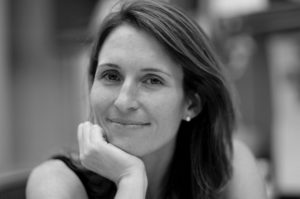 There are good scientific mentors. There are good professional life mentors. But good scientific mentors are not necessarily good career mentors. Those who are great at both deserve recognition. Dr. Erin Adams is quite the perfect example of someone who can offer great scientific advice and personal guidance. She is definitely someone I wish I had met earlier in my career. Dr. Adams is a fantastic mentor beyond the bench, the Joseph Regenstein Professor of Biochemistry and Molecular Biology, serves on the Committees on Immunology and, Cancer Biology at the University of Chicago. She is also a Principal Investigator of the myCHOICE program.
There are good scientific mentors. There are good professional life mentors. But good scientific mentors are not necessarily good career mentors. Those who are great at both deserve recognition. Dr. Erin Adams is quite the perfect example of someone who can offer great scientific advice and personal guidance. She is definitely someone I wish I had met earlier in my career. Dr. Adams is a fantastic mentor beyond the bench, the Joseph Regenstein Professor of Biochemistry and Molecular Biology, serves on the Committees on Immunology and, Cancer Biology at the University of Chicago. She is also a Principal Investigator of the myCHOICE program.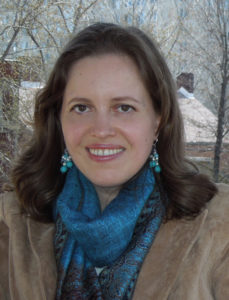 The first time I met Yulia was in 2015 when I visited Dr. Brian Popko’s laboratory to finalize my rotation. She smiled at me and said: “Whenever you have a question, you can come to me.” I thought her words were probably just a hint of her being a nice and polite senior postdoc in Dr. Popko’s laboratory. However, it turned out she really meant it. Since 2015, Yulia has become my role model, my best lab mate, and best friend. She is one of the few people I met who refresh my mind to look and experience the world differently.
The first time I met Yulia was in 2015 when I visited Dr. Brian Popko’s laboratory to finalize my rotation. She smiled at me and said: “Whenever you have a question, you can come to me.” I thought her words were probably just a hint of her being a nice and polite senior postdoc in Dr. Popko’s laboratory. However, it turned out she really meant it. Since 2015, Yulia has become my role model, my best lab mate, and best friend. She is one of the few people I met who refresh my mind to look and experience the world differently.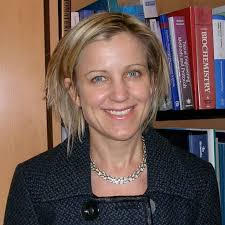 I confess that writing about Melody Swartz is a somewhat intimidating task. The world sees her as an Arnold and Mabel Beckman Young Investigator Award recipient, a winner of the National Science Foundation Early Career Award, and one of the Brilliant 10 named by Popular Science in 2006. There have already been numerous articles written about her; I was concerned that I would be rehashing another one of these articles that herald her many accomplishments. Nevertheless, I have the desire to do her achievements and even more so, the personal side of her story justice.
I confess that writing about Melody Swartz is a somewhat intimidating task. The world sees her as an Arnold and Mabel Beckman Young Investigator Award recipient, a winner of the National Science Foundation Early Career Award, and one of the Brilliant 10 named by Popular Science in 2006. There have already been numerous articles written about her; I was concerned that I would be rehashing another one of these articles that herald her many accomplishments. Nevertheless, I have the desire to do her achievements and even more so, the personal side of her story justice.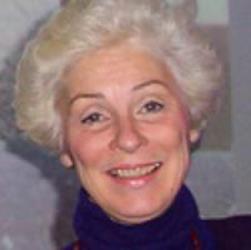 Dr. Nancy Schwartz often sits quietly, listening to scientists of all levels as though she is no different from the others in the room. Humility, a characteristic often attributed to womanhood, is partially why she is so successful. She listens, processes information, thinks about what to say so no word is left unweighted. She does not need to command respect with a loud voice and broad shoulders, she does it naturally and with a dash of class.
Dr. Nancy Schwartz often sits quietly, listening to scientists of all levels as though she is no different from the others in the room. Humility, a characteristic often attributed to womanhood, is partially why she is so successful. She listens, processes information, thinks about what to say so no word is left unweighted. She does not need to command respect with a loud voice and broad shoulders, she does it naturally and with a dash of class.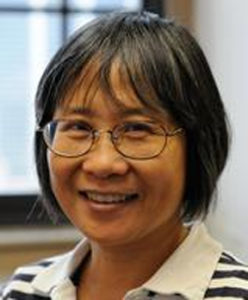 Dr. Sui Huang’s role model is Barbara McClintock, the Nobel Laureate who discovered transposable elements. In many ways, the two scientists are alike. Sui, like McClintock, has a fierce love and curiosity for science. She will often run into my lab with a grin on her face exclaiming about the latest piece of data that excites her. Sui is also an innovative scientist. Her ideas spark the imagination and push the limits of how we look at biology. Like McClintock, she is also persistent. Through the climate of tight funding, Sui continues to stay true to her honest pursuit of knowledge. As Sui serves in her current position as Associate Professor in the Cell and Molecular Biology Department at the Northwestern University Feinberg School of Medicine, she continues her joyful search for nuclear structures and functions in cancer cells and beyond.
Dr. Sui Huang’s role model is Barbara McClintock, the Nobel Laureate who discovered transposable elements. In many ways, the two scientists are alike. Sui, like McClintock, has a fierce love and curiosity for science. She will often run into my lab with a grin on her face exclaiming about the latest piece of data that excites her. Sui is also an innovative scientist. Her ideas spark the imagination and push the limits of how we look at biology. Like McClintock, she is also persistent. Through the climate of tight funding, Sui continues to stay true to her honest pursuit of knowledge. As Sui serves in her current position as Associate Professor in the Cell and Molecular Biology Department at the Northwestern University Feinberg School of Medicine, she continues her joyful search for nuclear structures and functions in cancer cells and beyond.